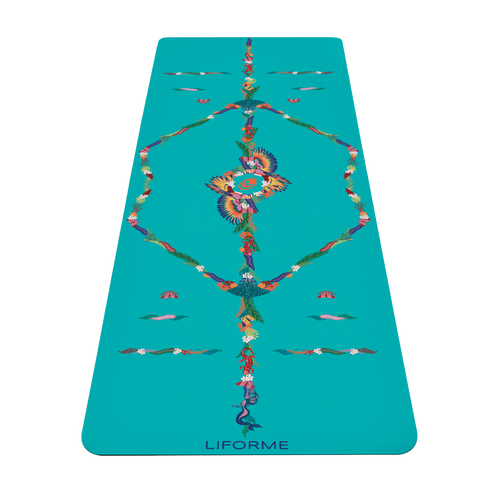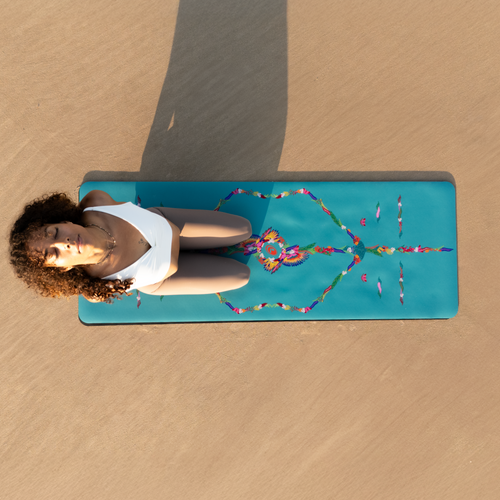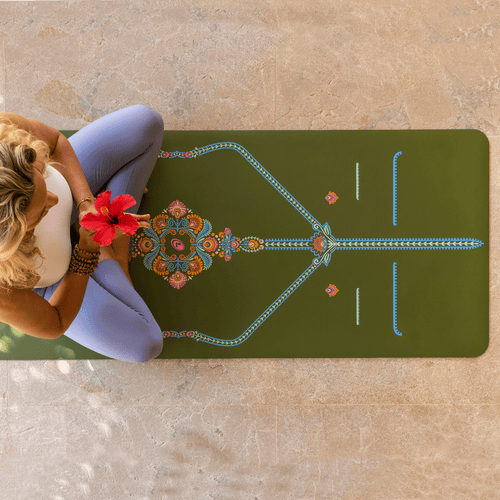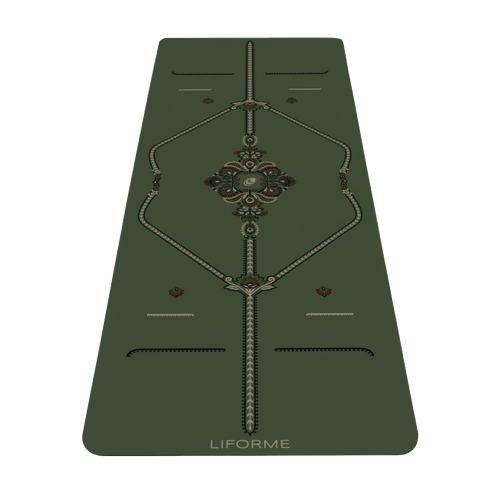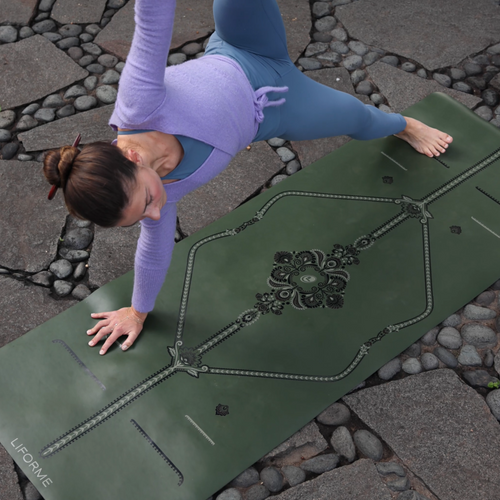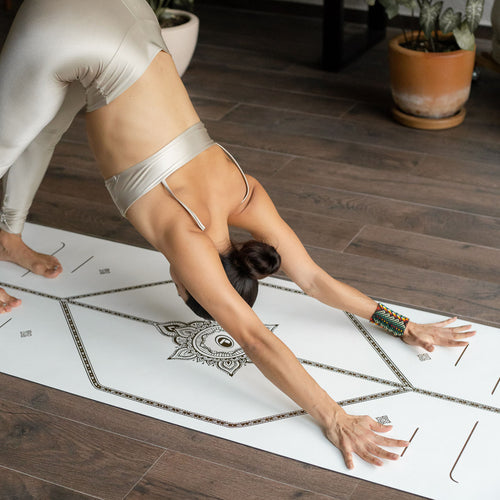Wide-Angle Seated Pose exemplifies a genre of pose that gives many people a sinking feeling in their guts: the gym class postures.
These are poses that you’ve done before in a setting you did not enjoy. And while it can be challenging to get your body into a position you’ve never done, sometimes it’s even more difficult to bring a fresh perspective to a posture that’s loaded with (possibly unpleasant) associations.
But, be assured, this is not your gym class’s wide straddle forward fold. The alignment and attention to detail described below make Upavistha Konasana a new experience: a yoga experience.
Wide-Angle Seated Pose Basics
Sanskrit Meaning: Upavistha (Seated) Konasana (Angle Pose)
Yoga Level: Beginner
Pose Type: Seated, Forward bend
Benefits: Stretches the hamstrings, calves, and inner thighs. Elongates the spinal support muscles. Improves your posture.
Props: A blanket and a few blocks may come in handy.
Key Alignment Cues to Keep in Mind
- Point your toes directly toward the ceiling. Do not let your feet turn inward or outward.
- Flex your feet strongly to engage the backs of your legs.
- Initiate your forward fold from your pelvis. Your pelvis rotates into an anterior position while your legs are actively anchored on the floor. If you imagine the pelvis as a bowl of water, you can picture the water pouring out of the front as you come forward.
- Yoga students are often instructed not to round the spine in their seated forward folds, but there are times when it’s useful to explore the difference between flexion (rounded) and extension (straight, in this case). If you are going to move into flexion, do so with intention, not because it gives the impression of a deeper pose. If you have a history of back pain or injury, speak to your health care provider about spinal movements you should avoid.
- Move on inhalations and exhalation of breath.
- Don’t be in a hurry. Deepen the posture slowly over the course of several rounds of breath
Step by Step Instructions
- Come to sit on your mat with your legs extended in a V shape. How wide you take the legs varies for each person. Try opening them until you feel a stretch along your inner thighs.
- Lift your arms up toward the ceiling.
- On an exhalation of breath, begin to come into a forward fold by tipping your pelvis forward, bringing your torso toward the floor while keeping your spine straight.
- Lengthen your spine on your inhalations and deepen the posture on your exhalations. Remember to keep your feet flexed and toes active.
- Once you have come into your fullest anterior rotation of your pelvis, stop, release your arms to the floor, and take several deep breaths. If you want to round your spine, this is the time.
- On an inhalation of breath, return to an upright seat. You may deepen your experience of the pose by repeating the posture three times.
Tips for Beginners
- If it’s difficult for you to sit up straight, take a folded blanket under your bum. It may also help to soften your knees, allowing your legs to bend slightly.
- It doesn’t matter how wide you take the legs, so listen to your body and do what feels natural.
- Don’t worry if you don’t come forward very far. Your goal is not to get your chest to the floor or anywhere near the floor. Rather, you want to feel the stretch along the backs of your legs.
- Try placing a block between your outstretched legs to rest your forehead on in your forward fold. Stack several blocks if necessary.
Related Postures

Head to Knee Pose (Janu Sirsasana)
Many people find it more comfortable to stretch while extending one leg at a time, which makes Janu Sirsasana a nice alternative and a good preparatory pose.
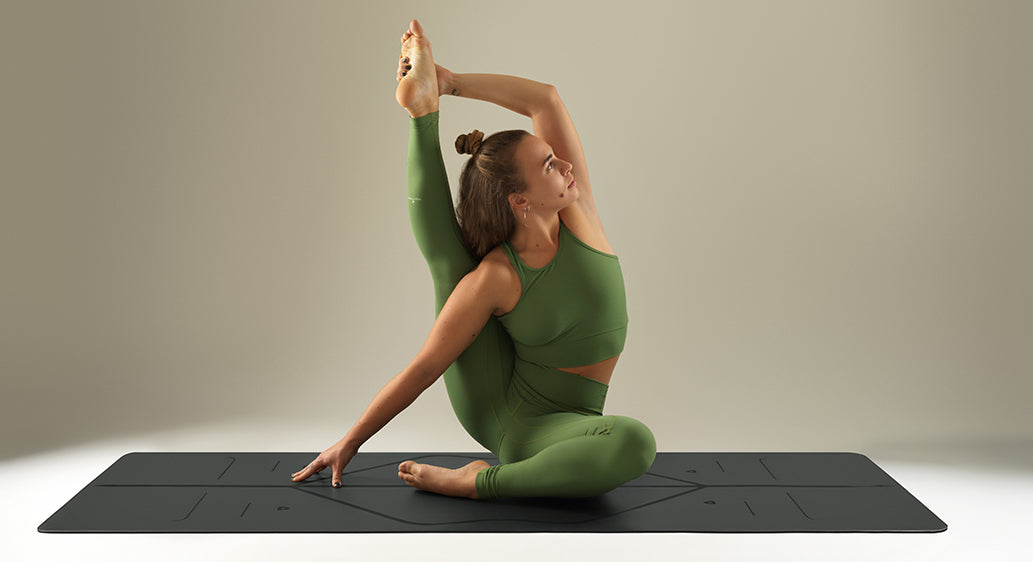 Seated Yoga Poses
Seated Yoga Poses
While you’re sitting on the floor, take a few other seated postures for a spin.
Upavistha Konasana On!
Now that all associations with gym class have been banished by practicing with careful attention, keep up the good work. Use props as you need them, and you’ll enjoy the benefits of stretching your hamstrings safely. You can really experience progress in this posture through regular practice, so Upavistha Konasana on!












